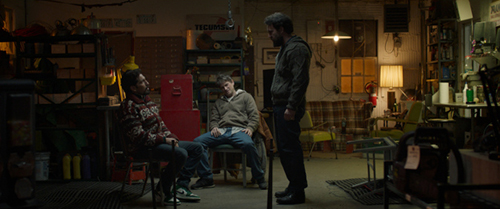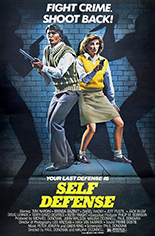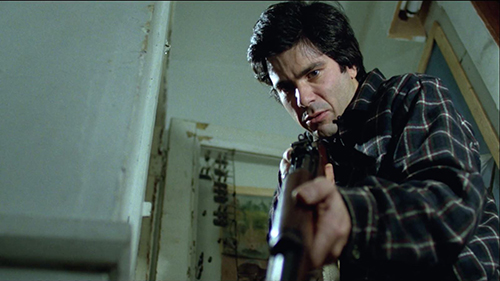
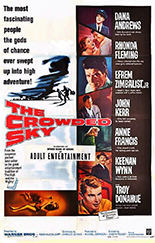 A Technicolor template for the Airport franchise, The Crowded Sky gets its title from two planes headed straight for one another: a California-to-D.C. Navy jet and a D.C.-to-California airliner.
A Technicolor template for the Airport franchise, The Crowded Sky gets its title from two planes headed straight for one another: a California-to-D.C. Navy jet and a D.C.-to-California airliner.
The two-man military jet is flown by Cmdr. Heath (Efrem Zimbalist Jr., Hot Shots!), shortly after his hot, estranged wife (Rhonda Fleming, The Nude Bomb) eschews accountability for the fact penises not attached to his body tend to make their way into hers. Add in that Heath was responsible for a midair collision a few years prior, and one understands why an enlistee (Troy Donahue, Palm Springs Weekend) is hesitant to take the passenger seat, but being pressed for time, has no other choice.
Piloting the Trans States flight is past-his-prime Dick Barnett (Dana Andrews, ironic considering his eventual plot function in Airport 1975), who’s none too pleased archenemy John Kerr (Roger Corman’s The Pit and the Pendulum) has been assigned co-piloting duties. Meanwhile, Kerr’s distracted by his affair with the lead stewardess (Anne Francis, TV’s Honey West), who’s pushing for a ring with rather unconventional, that-settles-that justification: “I’m the ex-champ of tramps, and ex-tramps make the best wives.” Incidentally, her name is Kitty.
While much of the movie is devoted to flashbacks detailing these turbulent relationships, Crowded Sky director Joseph Pevney (Man of a Thousand Faces) and writer Charles Schnee (The Bad and the Beautiful) make a choice to grant their most notable passengers a backstory as well — exposition via voice-over. A TV scribe (Keenan Wynn, Bikini Beach) hits on his seatmate (Jean Willes, Abbott and Costello Go to Mars) without realizing they used to be lovers. On the other side of the aisle, a sad sack (Louis Quinn, Superchick) wants to hit on his seatmate (Hollis Irving, Frogs), but has no game; she’d welcome the attention, but tells herself, “Too bad I’m a dog.” Rough!
Pevney moves among these internal monologues so quickly, they unintentionally carry comic beats, as if the characters are popping out of hidey-holes within Laugh-In’s “joke wall” just long enough to deliver their lines. Although Airplane! exists because of 1957’s Zero Hour! (which also plopped Andrews in the cockpit), the parody clearly cribbed its thought-bubble bit from the Sky.
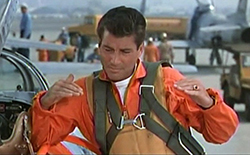 Speaking of bubbles, this one’s full of soap — like Peyton Place at 20,000 feet, back when commercial air travel was considered a novel, even glamorous venture. So why not have a society’s worth of trouble play out above the clouds? With Airport a decade on the horizon, the disaster portion is secondary — if even that high — on The Crowded Sky’s ladder of importance; had Pevney and Schnee excised the threat of physical danger, audiences still would be left with an outmoded riot.
Speaking of bubbles, this one’s full of soap — like Peyton Place at 20,000 feet, back when commercial air travel was considered a novel, even glamorous venture. So why not have a society’s worth of trouble play out above the clouds? With Airport a decade on the horizon, the disaster portion is secondary — if even that high — on The Crowded Sky’s ladder of importance; had Pevney and Schnee excised the threat of physical danger, audiences still would be left with an outmoded riot.
Having said that, wow, am I thankful they didn’t! With the movie making good on its titular promise in the home stretch, the collision and aftermath are a marvel of miniature work — a sequence well worth a rewind. Inside the cabin, preparing passengers for a crash landing, Kitty instructs them to remove their false teeth. As many periled-plane pictures as I’ve seen, I’ve never seen that. —Rod Lott

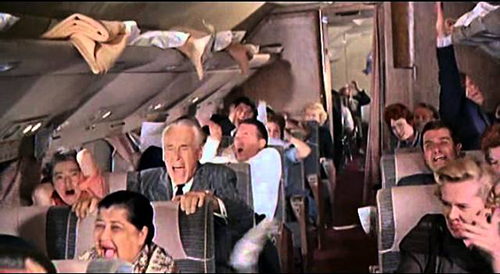
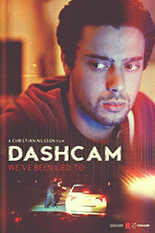
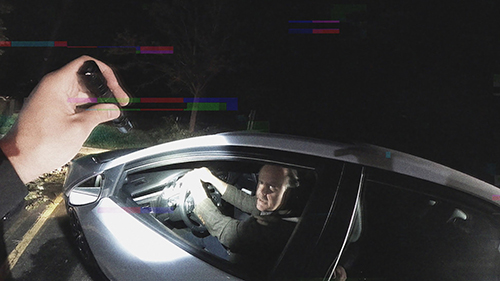
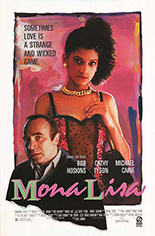
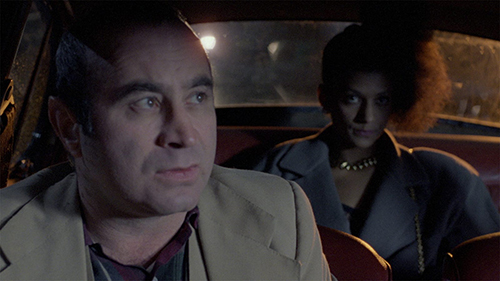
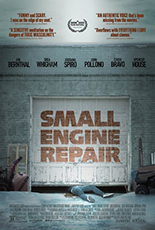 Months from now, and even years from now, someone is going to ask if you’ve seen Small Engine Repair. I believe this because it’s exactly the kind of unassuming little film that takes time to find its audience — living through word of mouth, one conversation at a time. So why not just see it right now?
Months from now, and even years from now, someone is going to ask if you’ve seen Small Engine Repair. I believe this because it’s exactly the kind of unassuming little film that takes time to find its audience — living through word of mouth, one conversation at a time. So why not just see it right now? 